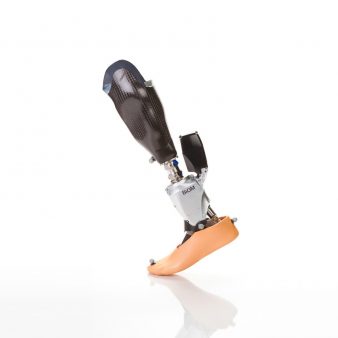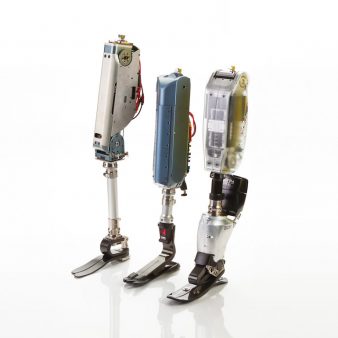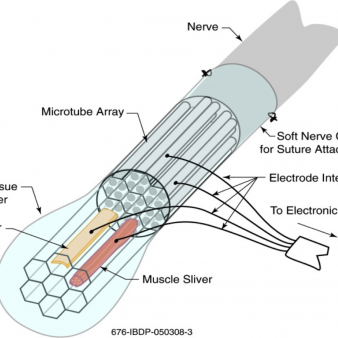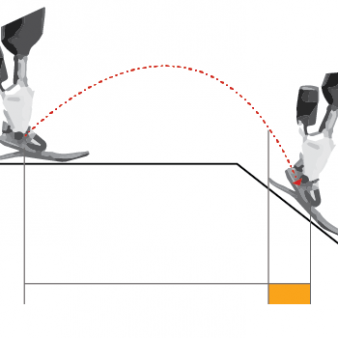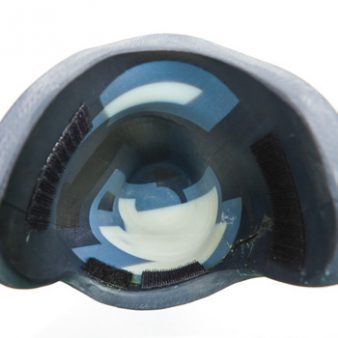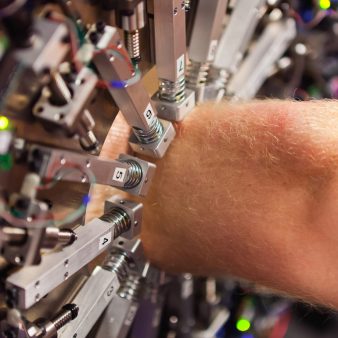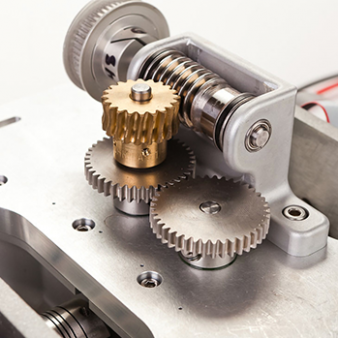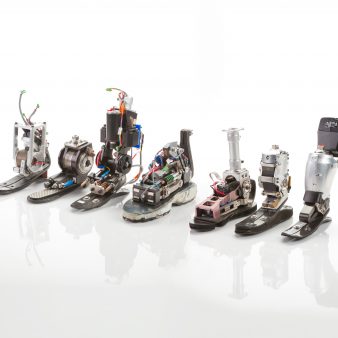Flexible, Scalable Electronics Architecture for Wearable Robotic Applications
Embedded systems for wearable robotics are ideally low-cost, lightweight, miniature, reliable and safe. They have high peak output and negligible standby power, are simple to use and program, can support high-performance real-time control loops and accept additional degrees...
READ MORE
The quasipassive transfemoral prostheses developed in this lab have onboard computation and control, but require minimal electrical power to operate. These devices provide biomechanial functionality without requiring large batteries and actuators.
User-adaptive control of a magnetorheological prosthetic knee
A magnetorheological knee prosthesis is presented that automatically adapts...
READ MORE
Even with cutting-edge bionic devices, it is not always clear how to best control them. To this end, we are developing methods that enable a device to automatically tailor its behavior for a given wearer.
User-adaptive control of a magnetorheological prosthetic knee
A magnetorheological knee prosthesis is...
READ MORE
Powered transfemoral prostheses have the ability to ameliorate the substantial energetic cost difference between amputees and non-amputees during walking. To this end, we are currently developing such technologies.
Agonist-antagonist active knee prosthesis: a preliminary study in level-ground walking.
We present a powered knee prosthesis with two series-elastic...
READ MORE
Interfacing bionic prostheses with the peripheral nervous system will allow amputees to receive tactile feedback from their prosthesis and volitionally control it akin to their biological limbs.
The goal of the Neural Interfaces Laboratory is to develop implantable devices that provide bi-directional communication between the peripheral...
READ MORE
Robotic wearable devices often must be able to distinguish among many different terrain conditions. We are developing methodologies for detecting these conditions with available sensor technology.
A method to determine the optimal features for control of a powered lower-limb prostheses
Lower-limb prostheses are rapidly advancing with greater...
READ MORE
The Biomechatronics Group seeks to develop a seamless interface between human skin and contact surfaces of the wearable devices.
A Variable-Impedance Prosthetic Socket for a Transtibial Amputee Designed from Magnetic Resonance Imaging Data
This article evaluates the design of a variable impedance prosthetic (VIPr) socket for a...
READ MORE
Towards the goal of developing more comfortable, better-fitting wearable devices, tools are being developed that can sense the properties of soft-tissues in human limbs.
Sockets–the cup-shaped devices that attach an amputated limb to a lower-limb prosthesis–are made through unscientific, artisanal methods that do not have repeatable quality...
READ MORE
The Biomechatronics Group uses biologically inspired actuator design to create robust and efficient performance. This technology is implemented in many of the bionic devices produced by our group.
Continuously Variable Series-Elastic Actuator
Actuator efficiency is an important factor in design of powered legged robots. A continuously variable...
READ MORE
The Biomechatronics Group is developing transtibial prostheses that produce net mechanical work. Such prostheses can restore an important component of biological ankle function for lower-extremity amputees.
Powered ankle–foot prosthesis improves walking metabolic economy
At moderate to fast walking speeds, the human ankle provides net positive work at...
READ MORE



